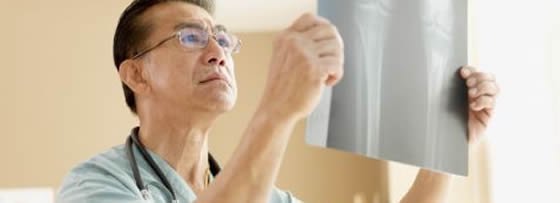Medical schools » Medicine
» Osteopathic Medicine
Osteopathic Medicine

Osteopathic medicine is a distinct form of medical practice in the United States. Osteopathic medicine provides all of the benefits of modern medicine including prescription drugs, surgery, and the use of technology to diagnose disease and evaluate injury. It also offers the added benefit of hands-on diagnosis and treatment through a system of therapy known as osteopathic manipulative medicine. Osteopathic medicine emphasizes helping each person achieve a high level of wellness by focusing on health promotion and disease prevention. Osteopathic medicine was founded in the late 1800s in Kirksville, Missouri, by Andrew Taylor Still, MD, who recognized that the medical practices of the day often caused more harm than good. Still focused on developing a system of medical care that would promote the body’s innate ability to heal itself. He called this system of medicine osteopathy, now known as osteopathic medicine. Osteopathic physicians, also known as DOs, work in partnership with their patients. They consider the impact that lifestyle and community have on the health of each individual, and they work to break down barriers to good health. DOs are licensed to practice the full scope of medicine in all 50 states. They practice in all types of environments, including the military, and in all types of specialties, from family medicine to obstetrics, surgery, and aerospace medicine. DOs are trained to look at the whole person from their first days of medical school, which means they see each person as more than just a collection of organ systems and body parts that may become injured or diseased. This holistic approach to patient care means that osteopathic medical students learn how to integrate the patient into the health care process as a partner. They are trained to communicate with people from diverse backgrounds, and they get the opportunity to practice these skills in their classrooms and learning laboratories, frequently with standardized and simulated patients. The osteopathic medical profession has a proud heritage of producing primary care practitioners. In fact, the mission statements of the majority of osteopathic medical schools state plainly that their purpose is the production of primary care physicians. Osteopathic medical tradition preaches that a strong foundation in primary care makes one a better physician, regardless of what specialty they may eventually practice. Today, when the challenge of ensuring an adequate number of primary care physicians extends to osteopathic medicine, the majority of most osteopathic medical school graduates choose careers in primary care. Osteopathic medicine also has a special focus on providing care in rural and urban underserved areas, allowing DOs to have a greater impact on the U.S. population's health and well-being than their numbers would suggest. While DOs constitute 7 percent of all U.S. physicians, they are responsible for 16 percent of patient visits in communities with populations of fewer than 2,500. Osteopathic medicine is also rapidly growing! Nearly one in five medical students in the United States is attending an osteopathic medical school. In addition to studying all of the typical subjects you would expect student physicians to master, osteopathic medical students take approximately 200 additional hours of training in the art of osteopathic manipulative medicine. This system of hands-on techniques helps alleviate pain, restores motion, supports the body’s natural functions and influences the body’s structure to help it function more efficiently. One key concept osteopathic medical students learn is that structure influences function. Thus, if there is a problem in one part of the body’s structure, function in that area, and possibly in other areas, may be affected. Another integral tenet of osteopathic medicine is the body’s innate ability to heal itself. Many of osteopathic medicine’s manipulative techniques are aimed at reducing or eliminating the impediments to proper structure and function so the self-healing mechanism can assume its role in restoring a person to health. In addition to a strong history of providing high-quality patient care, DOs conduct clinical and basic science research to help advance the frontiers of medicine and to demonstrate the effectiveness of the osteopathic approach to patient care. Currently, several organizations are involved in osteopathic clinical research in coordination with the Osteopathic Research Center. The facility’s staff develops, facilitates, and conducts multi-center, collaborative clinical research studies. |